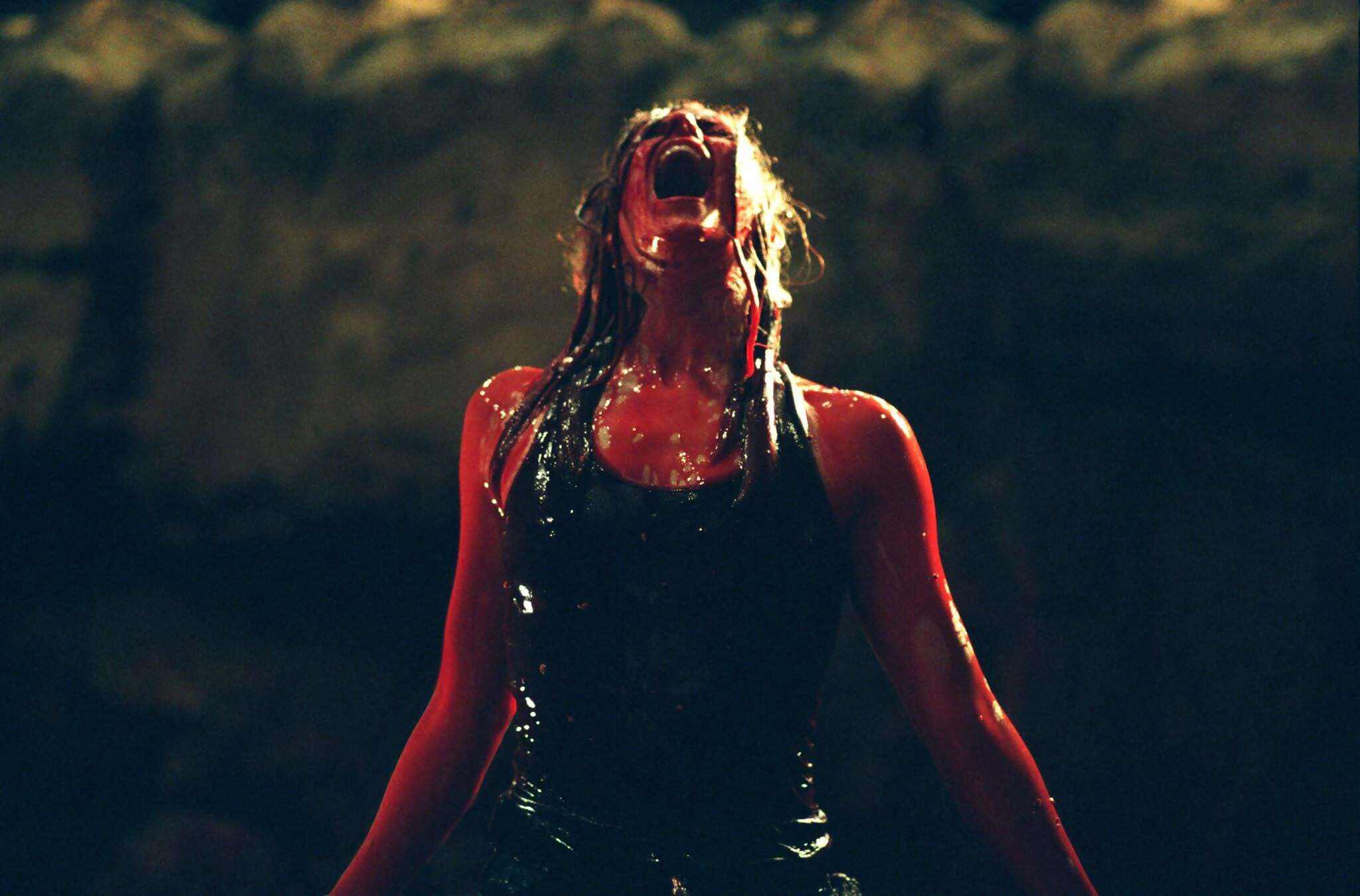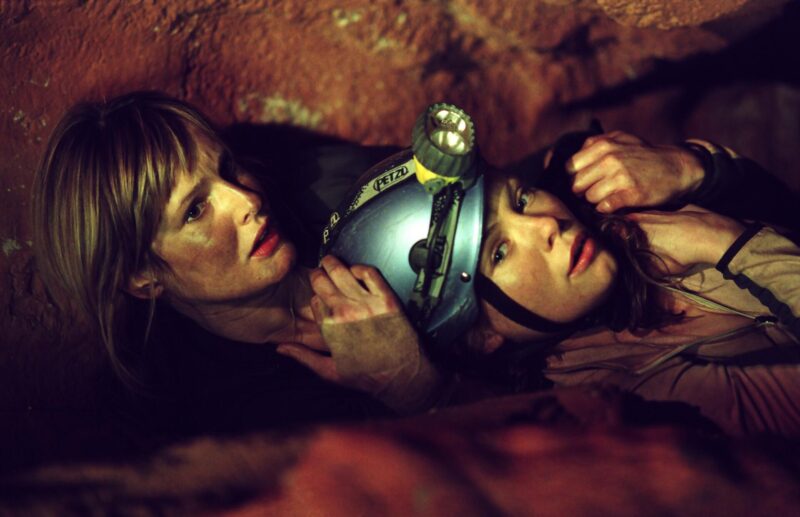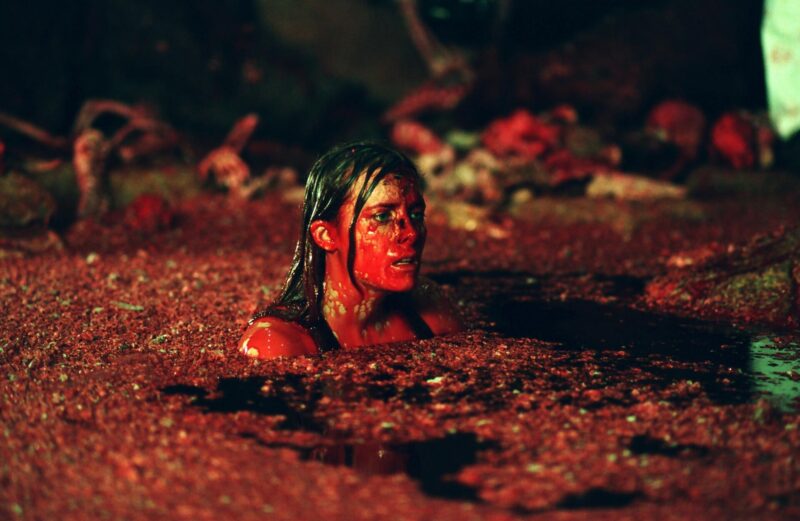
Now 20, The Descent has lost none of its impact. Here’s what modern horror films could learn from director Neil Marshall’s modern classic.
NB: The following contains spoilers for The Descent.
The UK has a long history of producing exceptional horror films. Just look at the legacy of Hammer, Ben Wheatley’s early work or 28 Days Later and its belated sequel 28 Years Later. And that’s just scratching the surface; there’s plenty more to scare your socks off in Britain’s horror pantheon.
It doesn’t get much more terrifying than Neil Marshall’s The Descent, however. Released in 2005, it felt refreshingly old school after the recent releases of Eli Roth’s Cabin Fever and James Wan’s Saw and the rising trend of “torture porn”. The Descent was a straightforward thrill ride that left you on the edge of your seat, with great creature design and believable side characters, which is more than you can say about many of today’s monster movies.
The film, as you probably already know, follows a group of women who are trapped in a cave. They quickly find out they’re not alone as the so-called crawlers emerge, hunting by sound, and with a strong love for disemboweling their prey.
As always, this is your final warning for heavy spoilers for all of The Descent.

Despite The Descent being released long before the words “elevated” and “horror” were merged to create a whole new cinema trend, it’s a film that looks at grief as much as gore. Yes, there are monsters hunting women, but it’s Sarah’s (Shauna Macdonald) slow descent into madness that gives the film the meat around its bones.
To give a little more context, Sarah lost her husband and child in a horrific accident – metal pipes and lots of blood are involved – a year before, and being trapped in a cave is just the final straw for her. It definitely doesn’t help when she finds out that her friend, and the trip’s planner, Juno, had an affair with her late husband. She also effectively killed another member of the caving party, Beth, by leaving her to die. Granted, the latter was the result of shock, but you can see why Sarah would be a little shaken at the information.
As things begin to look more and more hopeless, Sarah begins to transform; the quiet, grieving woman turns into a hardened fighter. In fact, many have argued that the crawlers are but a figment of Sarah’s imagination. Marshall confirmed this sense of ambiguity in an interview with Vulture, saying the script was originally written with a scene that all but confirmed the creatures weren’t real.
Depending on which corner of the world you’re reading this from, there’s a chance you’ve seen a different ending to The Descent than yours truly. The original UK ending, included in most of the countries the film was released in, finds Sarah, in a completely feral state after her friends have died, escaping the cave. After driving away, she stops in complete shock and sees a vision of Juno in the car with her, only to wake up and find herself back in the cave, having dreamt her escape. Sarah sees her daughter in the cave, finally finding a sense of peace as crawlers are heard approaching.
Most would consider this a pretty grim ending. It’s hopeless and depressing, but Marshall has also always said it’s actually a kind ending for Sarah. The filmmaker says he took inspiration from Terry Gilliam’s Brazil, giving Sarah some bliss in the end. “She loses her mind, but she finds her daughter. That brings her a degree of happiness, which she’s not gonna get if she escapes from the cave,” the director told Vulture.
Regardless, that original ending was so grim that in America, test audiences weren’t too keen on it, so they cut the final bit out and implied that Sarah did in fact get out. Throughout the years, Marshall has always maintained that the US ending doesn’t really take anything away from the story and helped get the film a wider release. So, really, everyone won here.

The Descent’s 2009 sequel, The Descent Part II, picked up mostly from this ending, eventually dragging Sarah back into the cave, encountering the crawlers again. The less said about the sequel, the better; it couldn’t re-create The Descent’s impeccable atmosphere or match its horror.
There’s much modern horror films could learn from The Descent. Its rich themes aren’t just matched, but nearly outshone by Marshall’s filmmaking. Especially when compared to The Descent Part II, the choice to limit the lighting turns out to be one of the film’s carrying forces. The Descent truly sucks you into the cave with the characters, and you never see more than they do. You, too, are trapped. You end up studying the screen, trying to see whether there are crawlers hiding in the darkness, ready to pounce on you.
In direct contrast to The Descent, today’s horror films highlight themes more than scares. Sure, you’ve still got Blumhouse spitting out more traditional horror films (sometimes of questionable quality), but today’s acclaimed horror flicks tend to pay more attention to what they’re about than what they do to the audience in the moment. The art of jumpscares feels long forgotten and The Descent’s biggest scare, when we see the crawlers for the first time, hasn’t lost any of its impact.
The Descent combines all the elements of both modern horror and the more classic offerings of the genre. There’s a lot of Alien and The Thing found in the film’s DNA; a group stranded in a remote, claustrophobic space with something hunting them. There are also parallels with Ari Aster’s 2019 folk horror Midsommar, as both Florence Pugh’s Dani and Macdonald’s Shauna slowly lose their minds while dealing with earlier tragedy. Both women also find a strange sense of solace at the end of their journeys, even if their respective endings are objectively pretty dire.
Horror will continue to evolve, for better or worse, but The Descent will remain one of the genre’s best offerings. Its effect can be seen in films like The Lodge, As Above, So Below, but particularly 2017’s The Ritual. If anyone ever tries to remake Marshall’s film, they’ll be under a lot of pressure to recreate The Descent’s singular terror. Good luck to them.
Now, if you’ll excuse me, I’m going on a caving expedition with my friends. What could go wrong?








